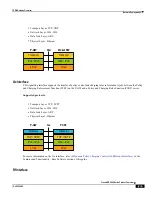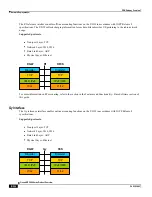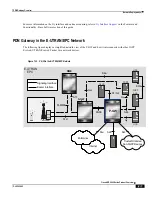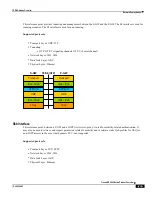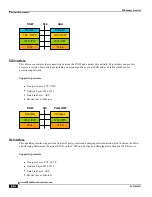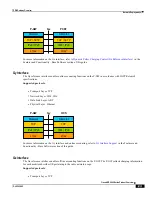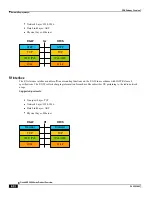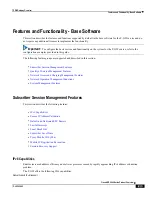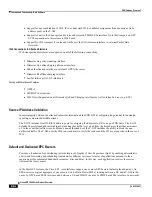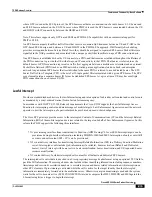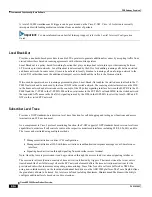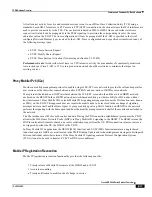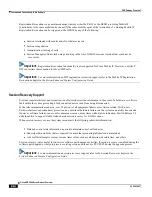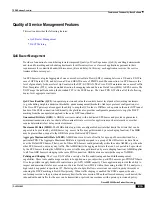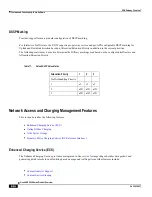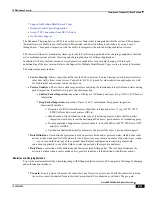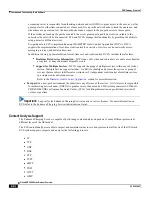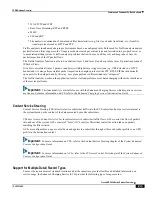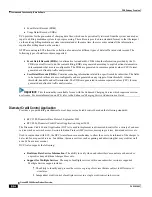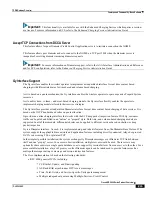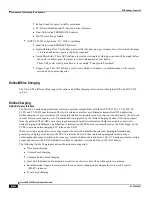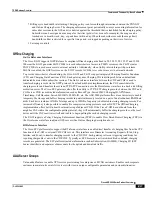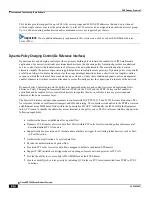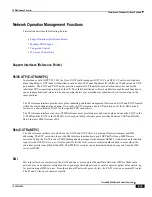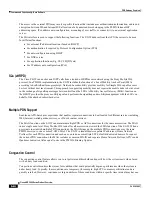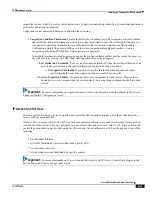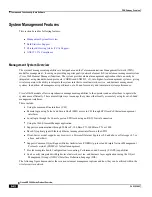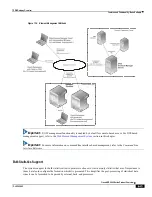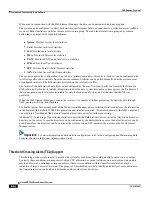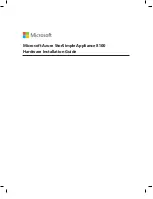
PDN Gateway Overview
Features and Functionality - Base Software ▀
Cisco ASR 5000 Series Product Overview ▄
OL-22938-02
Quality of Service Management Features
This section describes the following features:
QoS Bearer Management
Provides a foundation for contributing towards improved Quality of User Experience (QoE) by enabling deterministic
end-to-end forwarding and scheduling treatments for different services or classes of applications pursuant to their
requirements for committed bandwidth resources, jitter and delay. In this way, each application receives the service
treatment that users expect.
An EPS bearer is a logical aggregate of one or more Service Data Flows (SDFs), running between a UE and a P-GW in
case of GTP-based S5/S8, and between a UE and HSGW in case of PMIP-based S2a connection. An EPS bearer is the
level of granularity for bearer level QoS control in the EPC/E-UTRAN. The Cisco P-GW maintains one or more Traffic
Flow Templates (TFT's) in the downlink direction for mapping inbound Service Data Flows (SDFs) to EPS bearers. The
P-GW maps the traffic based on the downlink TFT to the S5/S8 bearer. The Cisco PDN GW offers all of the following
bearer-level aggregate constructs:
QoS Class Identifier (QCI)
: An operator provisioned value that controls bearer level packet forwarding treatments
(e.g. scheduling weights, admission thresholds, queue management thresholds, link layer protocol configuration, etc).
The Cisco EPC gateways also support the ability to map the QCI values to DiffServ code points in the outer GTP tunnel
header of the S5/S8 connection. Additionally, the platform also provides configurable parameters to copy the DSCP
marking from the encapsulated payload to the outer GTP tunnel header.
Guaranteed Bit Rate (GBR)
: A GBR bearer is associated with a dedicated EPS bearer and provides a guaranteed
minimum transmission rate in order to offer constant bit rate services for applications such as interactive voice that
require deterministic low delay service treatment.
Maximum Bit Rate (MBR)
: The MBR attribute provides a configurable burst rate that limits the bit rate that can be
expected to be provided by a GBR bearer (e.g. excess traffic may get discarded by a rate shaping function). The MBR
may be greater than or equal to the GBR for a given Dedicated EPS bearer.
Aggregate Maximum Bit Rate (AMBR)
: AMBR denotes a bit rate of traffic for a group of bearers destined for a
particular PDN. The Aggregate Maximum Bit Rate is typically assigned to a group of Best Effort service data flows
over the Default EPS bearer. That is, each of those EPS bearers could potentially utilize the entire AMBR, e.g. when the
other EPS bearers do not carry any traffic. The AMBR limits the aggregate bit rate that can be expected to be provided
by the EPS bearers sharing the AMBR (e.g. excess traffic may get discarded by a rate shaping function). AMBR applies
to all Non-GBR bearers belonging to the same PDN connection. GBR bearers are outside the scope of AMBR.
Policing and Shaping
: The Cisco P-GW offers a variety of traffic conditioning and bandwidth management
capabilities. These tools enable usage controls to be applied on a per-subscriber, per-EPS bearer or per-PDN/APN basis.
It is also possible to apply bandwidth controls on a per-APN AMBR capacity. These applications provide the ability to
inspect and maintain state for user sessions or Service Data Flows (SDFs) within them using shallow L3/L4 analysis or
high touch deep packet inspection at L7. Metering of out-of-profile flows or sessions can result in packet discards or
reducing the DSCP marking to Best Effort priority. When traffic shaping is enabled the P-GW enqueues the non-
conforming session to the provisioned memory limit for the user session. When the allocated memory is exhausted, the
inbound/outbound traffic for the user can be transmitted or policed in accordance with operator provisioned policy.
Summary of Contents for ASR 5000 Series
Page 1: ......
Page 26: ......
Page 48: ...New In Release 10 0 SCM Features Cisco ASR 5000 Series Product Overview OL 22938 02 ...
Page 50: ......
Page 58: ......
Page 68: ......
Page 126: ......
Page 138: ......
Page 146: ......
Page 218: ......
Page 236: ......
Page 356: ......
Page 374: ......
Page 422: ......
Page 496: ......
Page 572: ......
Page 654: ......
Page 700: ......
Page 726: ......
Page 784: ......
Page 816: ......
Page 844: ......
Page 906: ......
Page 926: ......
Page 942: ......
Page 943: ...Cisco ASR 5000 Series Product Overview OL 22938 02 Chapter 30 Technical Specifications ...
Page 966: ......
Page 972: ......

